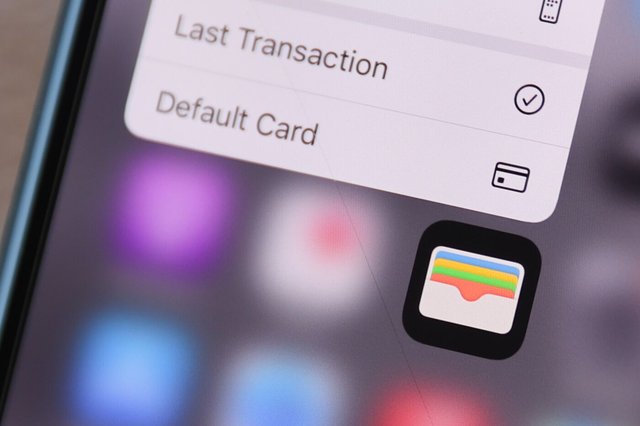
Teresa Xie and Paige Smith
Aug. 28, 2024
In the US, paying at a physical cash register is increasingly a digital experience. A smartphone’s “wallet” can store copies of debit cards, credit cards, concert tickets — even driver’s licenses and car keys. Usage of digital wallets has surged in recent years as tap-to-pay technology becomes commonplace for everything from public transportation to buying gas or groceries. Some 62% of US consumers said they used digital wallets in 2023, compared with 47% in 2022, according to Federal Reserve surveys.
What’s a digital wallet, exactly?
It’s an app that runs on a mobile phone, tablet, computer or other connected device, stores payment credentials, and enables financial transactions. Devices that run on Apple’s iOS, Google’s Android and other mobile operating systems come preloaded with wallet apps, and financial technology companies such as PayPal have their own apps and web-based payment services. (The biggest US banks also offer e-payments using their own app, Zelle, but that’s not considered a wallet because it doesn’t store money.) In-person tap payments are powered by near-field communication (NFC), a technology that enables devices that are within a few centimeters of each other to exchange information.

Usage of digital wallets such as Apple Pay continues to increase among American consumers.Source: NurPhoto
Is a wallet a credit card? Where is the money actually held?
A digital wallet is not a credit card, but it could be a way to use a credit card — in some cases. It really depends on which digital wallet is being used. Similarly, where the money is actually held depends on the wallet and the payment option. If a digital wallet holds a debit card, money is sitting in the bank connected to it. But if it’s holding a credit card, the money is just a loan from the bank. And something like the Starbucks app, say, is more like a prepaid gift card than anything else.
What’s the difference between digital wallets?
There are three dominant types:
- Apple Pay, Google Pay and Samsung Pay
These wallets, usually preloaded on smartphones, let users add debit and credit cards for mobile payments. When a consumer is ready to complete a transaction, they activate the wallet app, select the card of their choosing and position the smartphone near a payment terminal. The wallets can only be used with their associated brand of phone, though Apple recently announced it will let third parties use the iPhone’s payment chip to handle transactions.
- Venmo, Cash App, PayPal and other “P2P” wallets
These are different because they actually hold funds, likely in partnership with a fintech bank, before and after the money is transferred to the desired destination. If an app like Venmo were to fail or go bankrupt, consumers risk losing their balances or access to their accounts for a long period of time. (Zelle differs from Venmo in that it’s just an “instructor”; think of it as a facilitator asking one bank to send money to another bank.)
- Starbucks, Dunkin’ and other retailer apps
Effectively, these serve as prepaid cards. Think of loading money onto the Starbucks app as the equivalent of adding money to a gift card. The money isn’t sitting at a bank; it’s already with the retailer.
When did digital wallets become widely used?
Digital wallets have been around since the 1990s; PayPal and Alipay were among the first players. Google Wallet launched in 2011, followed by Apple Pay in 2014; Android and Samsung Pay came a year later. Google Wallet and Android Pay were eventually merged into Google Pay in 2018. But it wasn’t until 2019 that mobile wallets overtook credit cards to become the most widely used payment type globally; in the US, that feat took another four years. By 2028, digital wallets are projected to be used for $16 trillion in payments, according to a report by Juniper Research.
Why do some businesses not accept digital wallets?
If a business doesn’t accept digital wallets, it’s usually because they don’t want to pay to upgrade their payments hardware, or think the costs or limitations associated with accepting a digital wallet outweigh the benefits for consumers. They may also want customers to use their own digital payment platform — Walmart Pay, for example.
How safe are digital wallets?
It depends on the type. Using a wallet such as Apple Pay is arguably more safe than using a physical card, due to added security measures such as facial recognition. In addition, when tapping a phone to use Apple Pay, the digital wallet generates a unique identifier known as a “token” that doesn’t disclose the actual credit card number to the merchant. Venmo and Cash App are also relatively safe, given the security investments their parent companies have made, though the security of funds stored in the wallets could be called into question if those platforms were ever to fail.
Who regulates this space?
Different regulators oversee different corners of the space. In the US, the movement and custody of money is highly regulated with numerous areas of overlap. The Financial Crimes Enforcement Network, or FinCEN, enforces anti-money laundering laws, while certain banks must answer to some combination of oversight from the Office of the Comptroller of the Currency, the Federal Reserve and the Federal Deposit Insurance Corporation. State Attorneys General and consumer protection bureaus operate on the state level, serving as additional entities to deal with a set of concerns related to protecting consumers.
The Consumer Financial Protection Bureau already oversees PayPal and Block, but the agency has proposed supervising the likes of Apple, Google, Meta Platforms Inc., or any other company that handles more than five million transactions per year.
If finalized, the CFPB’s proposed oversight would allow the consumer watchdog to monitor the wallets for compliance with federal money-transfer laws, as well as for unfair, deceptive, or abusive conduct. If the companies act unlawfully, the agency already has the authority to step in, but the CFPB can’t regularly supervise their operations under current rules.
What else can this technology do?
Identification is one potential growth area. Only a few US states currently support digital wallets. But California, the most populous US state, announced plans in August to let residents keep their driver’s licenses in Apple and Google wallets.
Are digital wallets everywhere yet?
No, and many sizable transactions such as rent, utilities and business expenses are still completed with checks. However, digital wallets are becoming more global, and are particularly prominent in Southeast Asia, followed by Latin America, Africa and the Middle East. The number of mobile wallets in use is projected to grow to almost 440 million by 2025 across Indonesia, Malaysia, the Philippines, Singapore, Thailand and Vietnam, according to a research from London-based fintech company Boku Inc. The usage in Latin America is set to expand 166% during the same period, while that in Africa and Middle East will grow 147%.
© 2024 Bloomberg L.P.


